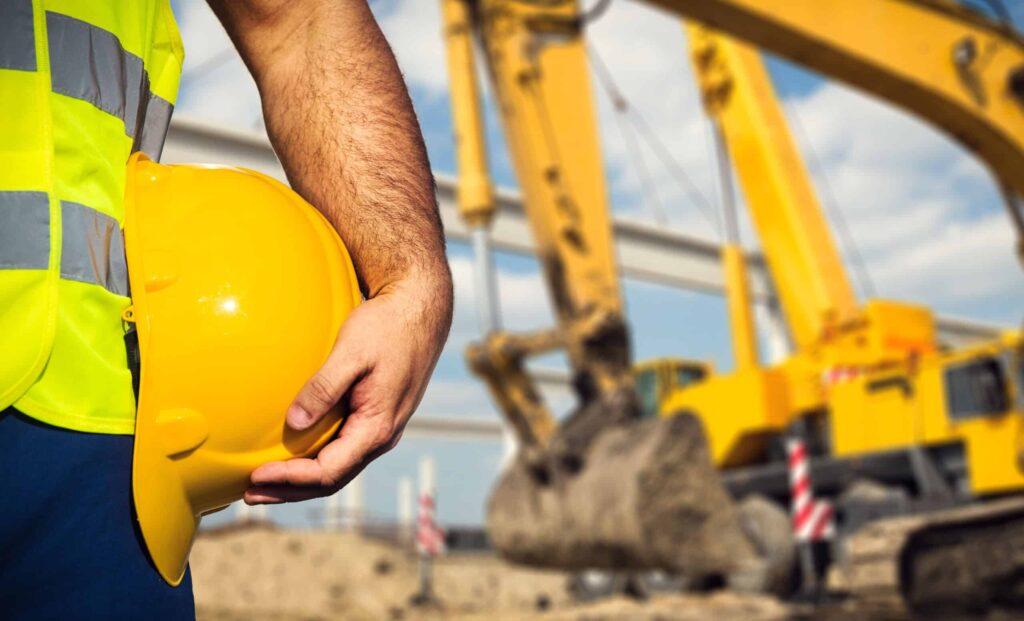Construction sites are inherently hazardous environments, where the risk of accidents and injuries is perpetually high due to heavy machinery, heights, and the unpredictable nature of the work. To mitigate these risks, the use of proper safety equipment is not just recommend but mandated by safety regulations. This article explores the various types of safety equipment used in construction sites, their importance, and how they contribute to creating a safer workplace for all involved.
Personal Protective Equipment (PPE)
Helmets
Helmets are perhaps the most visible form of PPE on construction sites. They protect workers from head injuries caused by falling objects, bumps against fixed objects, or by contact with electrical hazards.
Eye and Face Protection
Safety glasses or face shields are use depending on the operation to protect against flying particles, chemicals, or harmful exposure to light.
These are essential where workers are expose to liquids, such as oils, solvents, and chemicals, or any operations that might involve sparks or flying debris.
Hearing Protection
Construction sites are often fill with loud noises that can lead to hearing loss. Earplugs or earmuffs should be provided to workers when the noise levels exceed the limits where the risk to hearing is increase.
Respiratory Protection
Masks and respirators are crucial where there is a presence of dust, vapors, gases, or other airborne particles. Selection of the correct type of respirator is vital and depends on the contaminants from which workers need protection.
Hand and Foot Protection
Gloves are worn to protect the hands from a variety of hazards including cuts, burns, and exposure to chemicals.
Similarly, safety boots with steel toes and puncture-resistant soles are worn to protect feet from heavy objects, sharp objects, and slips.
High-Visibility Clothing
To ensure that workers are easily visible, especially those who work near traffic or operating heavy machinery, high-visibility clothing is essential. This often includes vests, jackets, or shirts in bright colors with reflective materials.
Fall Protection Equipment
Safety Harnesses
For any work at height, safety harnesses are crucial. They are design to catch a worker who has fallen and to distribute the force of the fall across the body evenly, reducing the chance of severe injuries.
Guardrails and Safety Nets
Guardrails are preventive measures install at the edges of heights to prevent falls. Safety nets are use where guardrails are not feasible, catching falling workers or even drop tools and materials.
Ladders and Scaffolding
Both ladders and scaffolding must comply with safety standards to ensure they are stable and strong enough to bear the weight of workers and their tools without risk of collapse.
Other Safety Equipment
Fire Extinguishers
Every construction site should be equippe with fire extinguishers. Different types of fires require different types of extinguishers, so sites often have multiple kinds available.
First Aid Kits
Accidents can and do happen, and a well-stocked first aid kit can be the difference between a minor injury and a major one. Kits should be easily accessible throughout the site.
Warning Signs and Barriers
Warning signs and physical barriers are use to mark hazardous areas, inform workers of potential dangers, and guide the flow of site traffic.
Communication Devices
In large sites, communication devices such as walkie-talkies are essential for coordinating work and ensuring everyone is inform of ongoing activities and emergencies.
Conclusion
Safety equipment is an integral part of the
construction industry, crucial not only for the protection of workers but also for the smooth operation
of construction activities.
While the cost of implementing comprehensive safety measures can be significant, the cost of neglecting them can be much higher,
leading to accidents, injuries, and even fatalities Employers must therefore ensure that all workers are equippment with the necessary safety gear and are train in its proper use
In doing so, they create not only a compliant workplace but a safe one where workers are protect and productivity is maintain

